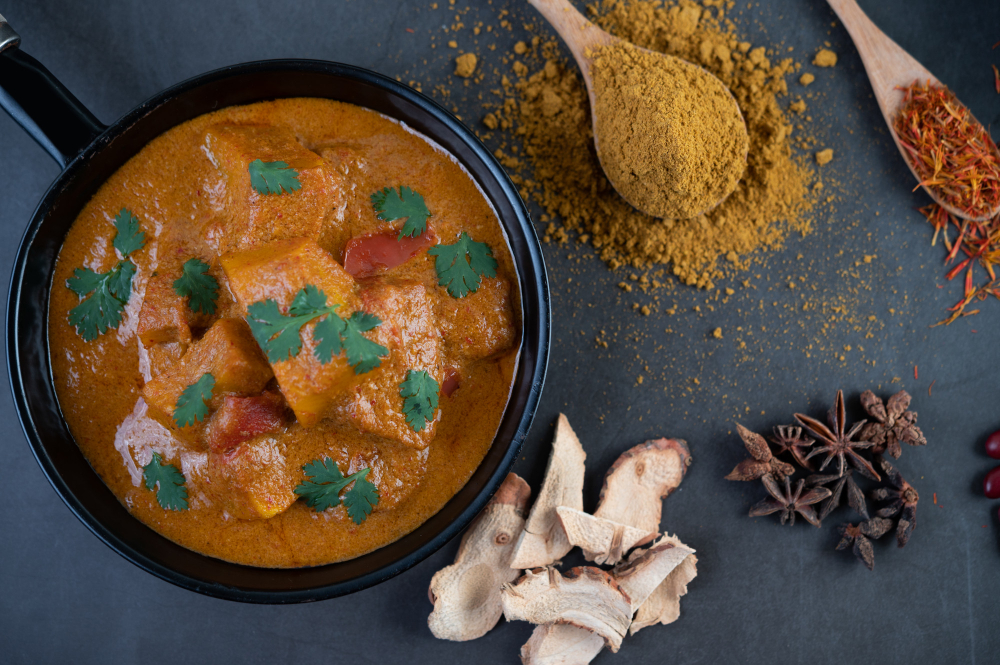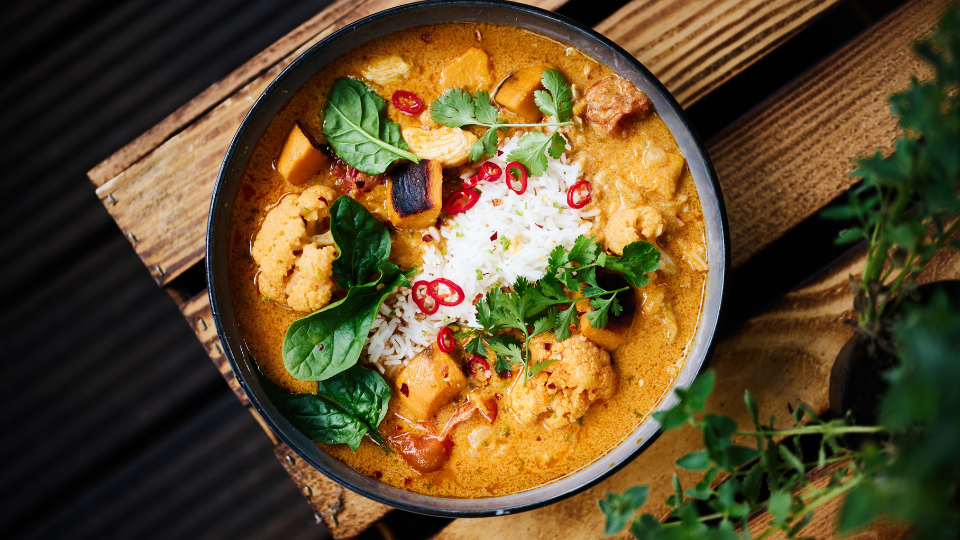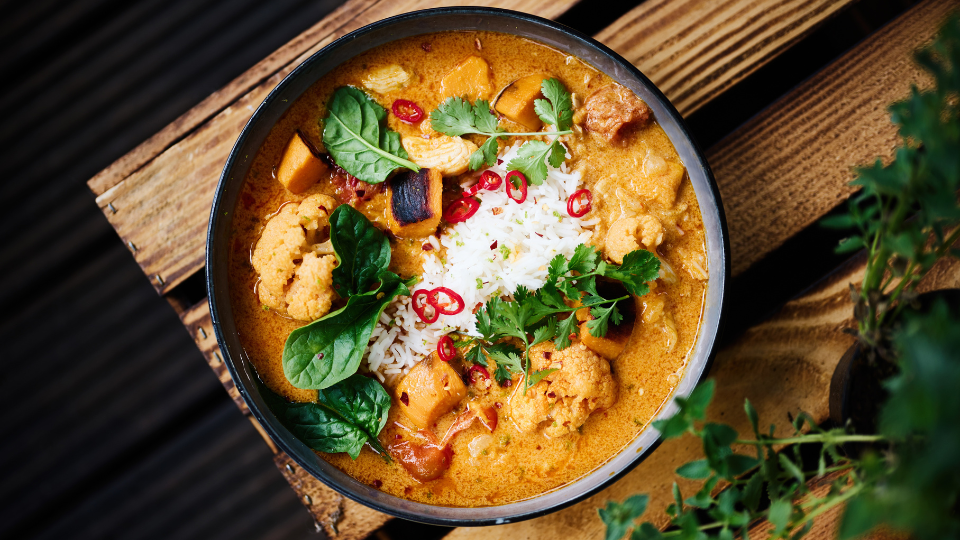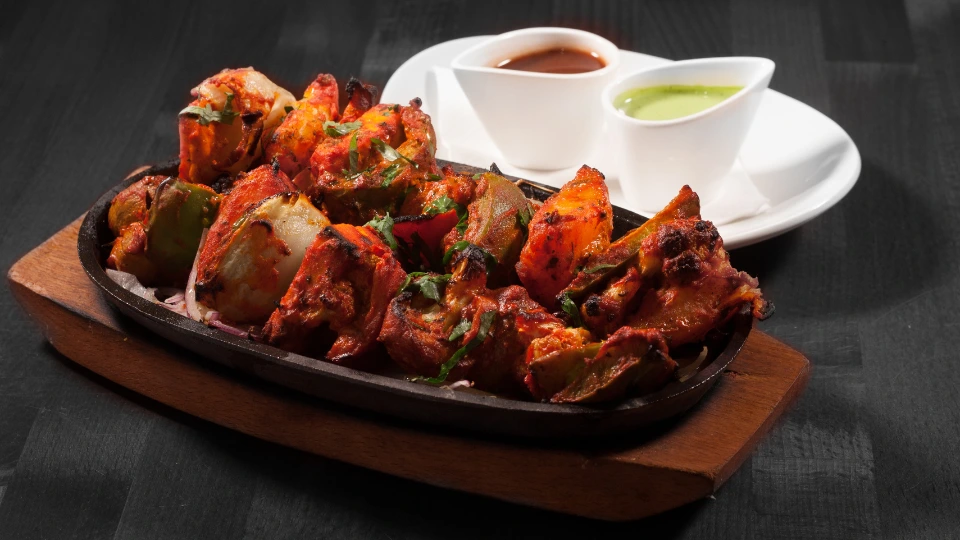Introduction
The rich and diverse world of Indian cuisine has captured hearts across the globe, and at its core lies the irresistible charm of Indian curry. From vibrant street food in Delhi to fine dining restaurants in Toronto, vegetarian Indian curry dishes have become staples that showcase tradition, flavor, and creativity. Whether you are a lifelong vegetarian or simply seeking wholesome alternatives, these dishes tell a story of culture while bringing comfort to the table. Their universal appeal has made them loved worldwide, transcending borders and connecting people through taste.
In this blog, we’ll dive into some of the most popular vegetarian Indian curry dishes that have gained global admiration. You’ll learn about the unique flavors, ingredients, and cooking methods that make each one special. Beyond the culinary details, we’ll explore why these curries are healthy, versatile, and endlessly adaptable. By the end, you’ll not only crave these dishes but also discover why Maharaja Riyasat is the perfect place to experience authentic Indian curry in Canada. Let’s begin our flavorful journey!
Things to Know Before Exploring Vegetarian Indian Curry
Indian curry is not just food; it’s a cultural experience. Before diving into the most famous dishes, it’s important to understand what makes vegetarian Indian curry unique and why it has become globally celebrated. From spices to cooking techniques, these key elements create the foundation of every curry you’ll encounter.
The Role of Spices in Indian Curry
At the heart of every vegetarian Indian curry recipe lies a blend of spices carefully balanced to create depth and aroma. Common spices include turmeric, cumin, coriander, garam masala, and chili powder. Each spice carries its own health benefits and plays a role in defining flavor profiles. For example, turmeric adds both earthy flavor and anti-inflammatory properties, while cumin enhances digestion. Together, these spices make curries not only delicious but also nourishing.
When combined, spices in Indian cooking follow the principle of layering flavors. Rather than overwhelming the palate, they build complexity one step at a time. This careful orchestration is what makes Indian curry distinct from many other cuisines. Whether you’re savoring a mild curry or a fiery one, spices ensure every bite is memorable.
Fresh Ingredients Make a Difference
Vegetarian curries shine because of the emphasis on fresh vegetables, legumes, and herbs. Ingredients like spinach, cauliflower, peas, and paneer are commonly used, often sourced locally to retain natural flavor. The use of seasonal produce allows for flexibility in recipes, ensuring dishes are fresh and vibrant throughout the year. Fresh coriander leaves, ginger, and garlic are almost always present, elevating both taste and aroma.
By focusing on fresh and wholesome ingredients, vegetarian Indian curry maintains its appeal as both comfort food and a health-conscious choice. Unlike processed meals, these dishes celebrate natural flavors while providing essential nutrients. This makes them a perfect balance of indulgence and wellness, enjoyed by families and food lovers everywhere.
Cooking Techniques That Define Flavor
Indian curries often begin with tempering, a process where whole spices are briefly fried in hot oil or ghee to release their flavors. This technique sets the foundation for the dish, ensuring a rich aroma from the very beginning. Slow cooking is another hallmark, allowing ingredients to absorb spices fully while creating creamy, layered textures.
These methods highlight why Indian curry has universal popularity. By carefully controlling heat and cooking times, chefs craft dishes that are both hearty and delicate. Techniques like simmering with coconut milk or cream add richness, while grilling or roasting vegetables beforehand enhances smokiness. Together, these techniques create a culinary art form.
Cultural Significance of Curry
Beyond flavor, vegetarian Indian curry represents community and tradition. In India, meals are often shared among family and friends, with curries playing a central role. Dishes like dal or chana masala are daily staples, while festive curries like navratan korma are reserved for celebrations. Each recipe carries stories passed down through generations.
This cultural depth is part of why Indian curry has found love worldwide. As immigrants carried recipes to new countries, these dishes became ambassadors of Indian culture. Today, they are cherished not only in India but in kitchens and restaurants across Europe, North America, and beyond.
Health Benefits of Vegetarian Curries
One of the reasons vegetarian Indian curry has gained a strong global following is its health profile. Packed with vegetables, legumes, and lean proteins like paneer, these dishes are naturally rich in fiber, protein, and vitamins. Spices such as ginger and garlic contribute to boosting immunity, while chilies are known for metabolism-enhancing properties.
For health-conscious eaters, vegetarian curries provide satisfying meals without compromising wellness. They cater easily to vegan, gluten-free, and plant-based diets, making them adaptable to diverse lifestyles. This versatility ensures Indian curry is not just delicious but also aligned with modern dietary preferences.
Popular Vegetarian Indian Curry Dishes
Chana Masala – The Protein-Rich Classic
Chana Masala, also known as chickpea curry, is one of the most beloved vegetarian Indian curries worldwide. Made with tender chickpeas simmered in a tangy tomato-onion base, it delivers both flavor and nutrition. The spices used—such as cumin, coriander, and garam masala—make it a dish bursting with warmth and depth. High in protein and fiber, it’s a favorite among vegetarians and fitness enthusiasts alike.
This dish pairs beautifully with rice, naan, or roti, making it versatile for any meal. Its popularity in Indian restaurants globally proves its universal charm. Whether enjoyed in a street-side stall in Mumbai or a fine dining restaurant in Canada, Chana Masala always offers comfort and satisfaction.
Palak Paneer – A Green Powerhouse
Palak Paneer combines fresh spinach puree with cubes of paneer (Indian cottage cheese), creating a dish that is as nutritious as it is delicious. The spinach provides iron, calcium, and vitamins, while paneer adds protein and texture. The curry is lightly spiced with ginger, garlic, and garam masala, resulting in a creamy, mildly tangy flavor.
Loved by vegetarians around the world, Palak Paneer is often recommended for those new to Indian food because it is flavorful without being overly spicy. Its vibrant green color makes it visually appealing, and it pairs perfectly with naan or steamed basmati rice, making it a wholesome choice for lunch or dinner.
Aloo Gobi – The Comfort Food Curry
Aloo Gobi, made with potatoes (aloo) and cauliflower (gobi), is a staple in Indian households. The vegetables are cooked with turmeric, cumin, and other spices, creating a golden-yellow curry with a subtle earthy taste. It’s a simple yet hearty dish, often cooked dry or semi-gravy depending on regional styles.
Its charm lies in its simplicity. Aloo Gobi demonstrates how humble vegetables, when combined with the right spices, can turn into something extraordinary. This dish is particularly popular among home cooks worldwide because it’s easy to prepare and requires readily available ingredients, making it a true comfort food.
Dal Tadka – The Everyday Staple
Dal Tadka is a lentil curry that holds a special place in Indian cuisine. Made with yellow lentils cooked until soft and then tempered with ghee, garlic, cumin, and dried red chilies, it delivers a comforting balance of flavors. The smoky aroma from the tempering process, known as “tadka,” makes it unique and beloved.
Dal Tadka is often enjoyed with steamed rice, creating the classic Indian comfort meal known as “dal chawal.” Its simplicity and nourishing qualities have made it a global favorite. Rich in protein and easy to digest, Dal Tadka remains a go-to dish for families and food lovers seeking authentic vegetarian Indian curry.
Navratan Korma – The Royal Curry
Navratan Korma, meaning “nine jewels curry,” is a rich and creamy dish made with a mix of nine different vegetables, nuts, and sometimes paneer. Cooked in a luxurious sauce of cream, cashews, and spices, this curry is mildly sweet with a delicate flavor profile. Its name reflects the opulence of Mughlai cuisine, where it originated.
This dish is often served at weddings and special occasions, symbolizing abundance and celebration. Around the world, Navratan Korma has become synonymous with indulgence in vegetarian Indian cuisine. Its colorful presentation and creamy texture make it a showstopper that continues to win hearts globally.
Baingan Bharta – The Smoky Delight
Baingan Bharta is a curry made from roasted eggplant mashed and cooked with onions, tomatoes, and spices. The roasting process gives it a smoky flavor that distinguishes it from other curries. This dish is especially popular in northern India but has gained fans internationally due to its unique taste.
It’s often paired with roti or naan, making it a hearty and satisfying meal. For those who love bold, rustic flavors, Baingan Bharta is an unforgettable vegetarian curry. Its popularity abroad highlights how traditional Indian cooking techniques can create dishes with universal appeal.
Vegetable Jalfrezi – The Stir-Fry Curry
Vegetable Jalfrezi is a semi-dry curry featuring stir-fried vegetables cooked with tomatoes, bell peppers, and aromatic spices. Unlike many other curries, Jalfrezi retains the crunch of vegetables, making it fresh and vibrant. This dish is slightly tangy, spicy, and incredibly versatile, often enjoyed with naan or rice.
Its origins trace back to colonial India, but today it’s one of the most commonly ordered dishes in Indian restaurants abroad. Vegetable Jalfrezi appeals to those who love lighter curries with bold flavors and plenty of texture, making it a global favorite among vegetarians.
Malai Kofta – The Indulgent Treat
Malai Kofta is considered one of the most indulgent vegetarian curries. It features fried dumplings made of paneer, potatoes, and spices, served in a rich, creamy tomato-based gravy. The word “malai” refers to cream, which gives the dish its signature velvety texture.
Often served at celebrations and festive gatherings, Malai Kofta is beloved for its luxurious taste and presentation. Outside India, it has become a symbol of Indian fine dining, offering an unforgettable experience for curry lovers. It pairs beautifully with butter naan or jeera rice, making it a complete indulgence.
Why Choose Maharaja Riyasat for Authentic Indian Curry
When it comes to experiencing authentic vegetarian Indian curry in Canada, Maharaja Riyasat stands out as a premier destination. The restaurant is dedicated to preserving the true flavors of India while adding a touch of modern sophistication. Every curry is crafted with carefully sourced ingredients, ensuring freshness and authenticity in every bite.
At Maharaja Riyasat, the culinary team brings together traditional recipes and contemporary presentation. From the richness of Malai Kofta to the comfort of Dal Tadka, every dish is prepared with passion and precision. The restaurant also offers a warm ambiance that complements the dining experience, making it ideal for both casual meals and special occasions.
Beyond just food, Maharaja Riyasat is committed to offering an immersive cultural experience. With impeccable service, curated menus, and a deep respect for culinary traditions, it ensures every guest feels connected to the heritage of Indian cuisine. For those seeking the best vegetarian Indian curry in Canada, Maharaja Riyasat is the ultimate choice.
Conclusion
Vegetarian Indian curry has traveled far beyond India’s borders, becoming a culinary treasure loved across the globe. From the protein-packed Chana Masala to the indulgent Malai Kofta, each dish tells a story of tradition, innovation, and flavor. These curries are more than just meals; they are cultural experiences that unite people and celebrate diversity.
At Maharaja Riyasat, these timeless dishes come alive with authenticity and artistry. Whether you’re exploring Indian food for the first time or a seasoned curry enthusiast, this is the perfect place to enjoy world-class vegetarian curries. Visit Maharaja Riyasat and savor the flavors that have captured hearts worldwide—because nothing connects people quite like a steaming bowl of Indian curry.



